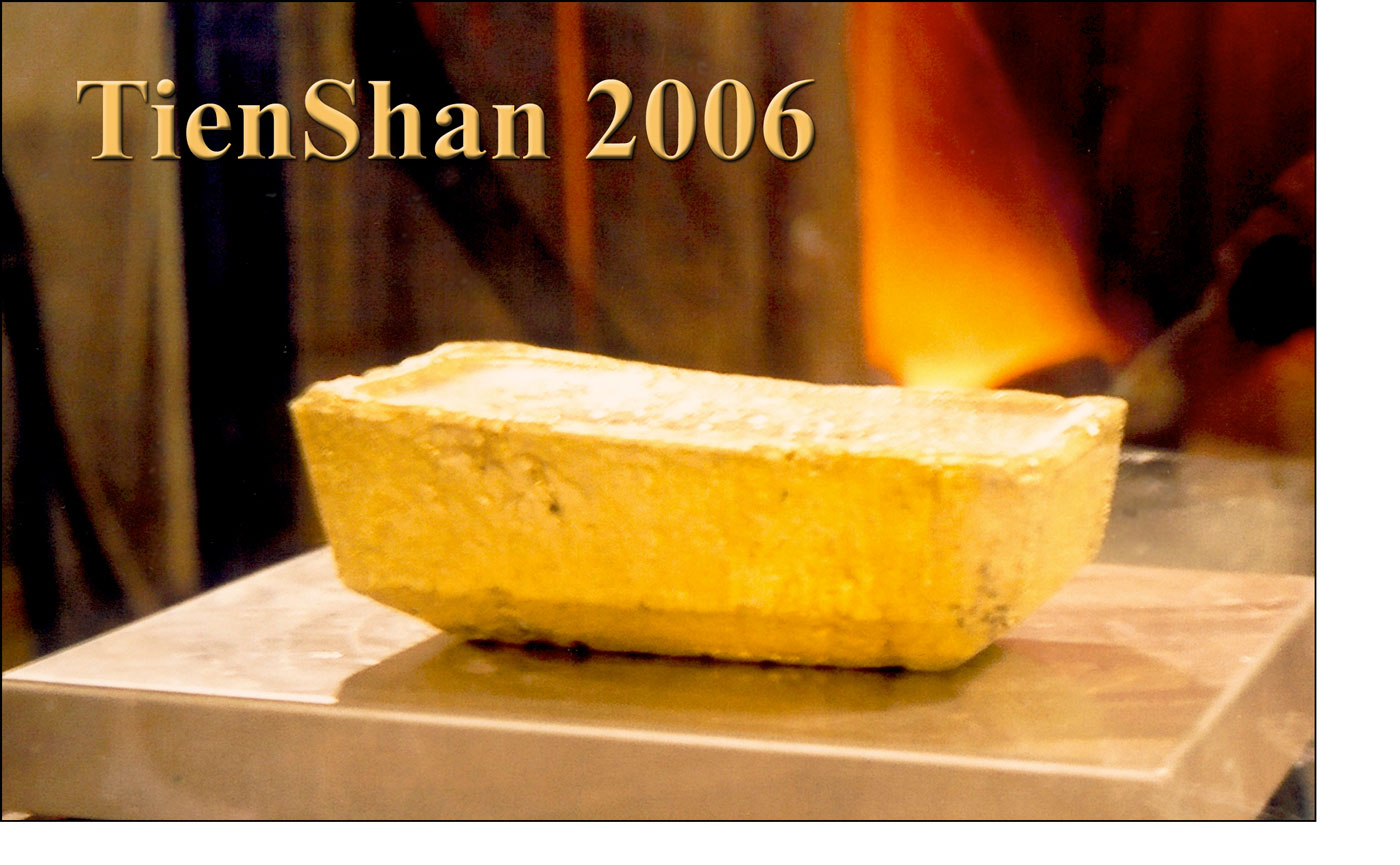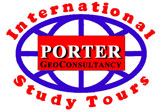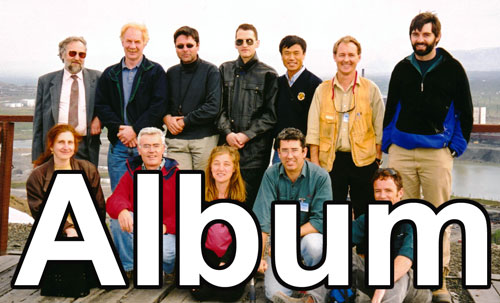| |||||||||||
|
TienShan 2006 Gold Bearing Deposits of Central Asia 11 to 19 September 2006 | |||||||||||
|
| |||||||||||

Porter GeoConsultancy continued it's series of International Study Tours by visiting a representative selection of the most significant gold & gold bearing deposits of the Tien Shan gold belt in Uzbekistan.
The Tien Shan gold belt stretches across Central Asia from western Uzbekistan, through Tajikstan, Kyrgyzstan and southern Kazakhstan to far western China, and is one of the most heavily gold endowed segments of the Earth's crust. The tour commenced in Tashkent, Uzbekistan on the evening of Sunday 10 September and ended back in Tashkent on the afternoon of Tuesday 19 September. Participants had the option of taking either the full tour -or- any block of 4 or more days up to the the full tour, as suited their availability and interest. A full day workshop was run in Tashkent at the beginning of the tour to provide a context to the tectonic, geological and metallogenic setting of the Tien Shan Belt and the deposits within it.
The tour program was as follows: Although belonging to two different terrane settings, the giant orogenic Au mineralisation hosted by the black-shale series of the Southern Tien Shan, and the giant Cu-Au porphyries of the Almalyk district, in the Valerianov-Beltau-Kurama magmatic arc, of the Middle Tien Shan, have some striking similarities. These suggest a crust-mantle interaction and dominance of a deep-seated regime during emplacement (I.M. Golovanov, pers. comm.; Dalimov et al., 2003). They are temporally close (315 to 285 Ma, Seltmann et al., 2004), and their isotope signatures reveal the incorporation of a moderate mantle component (Chiaradia et al., 2005), whilst geophysical patterns from the middle crust in the region exhibit zones of low reflection indicating the existence of extended mafic bodies just beneath both giant ore-magma systems (S. Cherkasov, pers. comm.). The orogenic gold deposits of the Tien Shan Mineral Belt include some of the largest economic gold accumulations in the world. These deposits are spread across the belt in Russia, Uzbekistan, Tajikistan, Kyrgyzstan, Kazakhstan and western China, and span the time scale from Lower to Late Palaeozoic. The greatest concentration of significant orogenic gold deposits however, is in the southwestern part of the belt, in the South and Middle Tien Shan of Uzbekistan and Kyrgyzstan. These deposits are located at mesozonal crustal levels, associated with, and either within Late Palaeozoic granitoid intrusives, or their contact metamorphic aureoles. The mineralisaiton yields radiometric dates coincident with Permian magmatism emplaced during the final- to early post-collisional stages of orogenesis, within a sutured back-arc setting containing carbon-rich sedimentary sequences (Cole and Seltmann, 2000; Yakubchuk et al., 2002; Mao et al., 2004). However, few of the deposits can be shown to have a direct genetic link with the associated intrusives. Never-the-less, geochemical, isotope and fluid-structural models have implicated highly evolved Late Palaeozoic, syntectonic I-type granitoids as the source of metals and/or fluids for spatially associated orogenic gold deposits within the belt. The orogenic gold deposits of the South Tien Shan are controlled by structures related to the Southern Tien Shan Suture Zone that separates the Carboniferous Valerianov-Beltau-Kurama magmatic arc to the north, and the Altai-Tarim-Karakum micro-continent to the south. They are hosted by the back arc accretionary complex deposited in the basin that had separated these two tectonic elements. The suture zone is defined by ophiolites and borders the strongly deformed fold and thrust belt of the Southern Tien Shan that has been extensively intruded by Permian granitoids and hosts most of the significant orogenic-style gold deposits (Mao et al., 2004). The gold-quartz vein systems of the orogenic gold deposits appear to represent only part of a larger magmatic-hydrothermal system that often includes earlier scheelite (±Au) skarn mineralisation (e.g. Zharmitan in Uzbekistan and Jilau in Tajikistan, while Muruntau, also in Uzbekistan, exhibits some similarities). In these examples, Au and W occur together with characteristic enrichments of As, Bi, Mo and Te deposited from CO2-rich fluids at temperatures of up to 400°C and pressures of ~2 Kbar (Cole and Seltmann, 2000). Cole and Seltmann, (2000) note a general trend in these granitoid related systems, where W, in the form of scheelite, dominates in mesozonal, more reduced settings, while Cu substitutes for W in the paragenesis of epizonal, more oxidised systems. They suggest a continuum which would encompass classic Cu-Mo-Au porphyry, Cu-Au skarn and Au-Ag epithermal deposits in epizonal crustal environments/levels, passing down into W-Mo-Au with associated Bi-As-Te associations in skarn, lode and stockwork deposits (i.e. orogenic-style Au) at mesozonal depths. This overview is summarised from Seltmann and Porter, 2005 ..... Monday 11 September 2006. The tour was organised, managed and escorted by Mike Porter of Porter GeoConsultancy Pty Limited. See the photo album, linked above, for more detail. | |||||||||||
| |||||||||||
|
| |||||||||||












